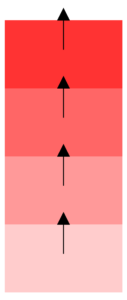Did you know that something as simple as wearing compression socks can significantly improve circulation and enhance your overall health? Compression socks, also known as support stockings or pressure socks, are specialized hosiery designed to prevent and alleviate various medical issues related to poor circulation. These socks apply gentle, graduated pressure on the lower legs and feet, enhancing blood flow back to the heart, reducing swelling and discomfort, and ultimately improving circulation.
The mechanism behind compression socks is ingenious. These socks are tightest around the ankles, with the degree of compression gradually decreasing as they go higher up the leg. This graduated pressure encourages blood flow upwards against gravity, thereby reducing the likelihood of blood pooling in your legs and feet. This common issue can lead to conditions like varicose veins, deep vein thrombosis, and leg swelling.
Compression socks are more than just a health accessory; they are an integral tool for promoting better blood circulation. By applying pressure to your lower legs, they help maintain blood flow and reduce discomfort and swelling. Whether you’re an athlete, a healthcare worker, an office employee, or a traveler, compression socks can make a significant difference in your daily life.
Healthy Blood Flow and Overall Wellness
Circulation is an essential bodily function that impacts your overall health and wellbeing. But what exactly is circulation, and why is it so important?
Circulation, in medical terms, refers to the continuous movement of blood throughout the body, delivered by the cardiovascular system. This vital process starts with the heart, the body’s pump, which pushes oxygen-rich blood through the arteries to every cell and organ. Once the oxygen is delivered, the now oxygen-depleted blood returns to the heart via the veins, and the process starts anew.
The lymphatic system, another component of circulation, removes excess fluid, waste, and other unwanted materials from body tissues and returns them to the bloodstream for elimination.
Why Circulation is Important
When circulation is poor, it can lead to various health problems, including numbness, pain, and potentially severe conditions like heart disease or stroke.
- Oxygen and Nutrient Delivery
Good circulation ensures efficient distribution of oxygen and nutrients to all parts of the body. This nourishment keeps our organs functioning optimally and supports the body’s overall health. - Waste Removal
Our bodies produce waste products during metabolic processes. Efficient circulation aids in flushing out these toxins, keeping our cells healthy and reducing the risk of disease. - Temperature Regulation
Circulation helps regulate body temperature, ensuring that every part of the body maintains a steady, healthy temperature. - Immune Function
White blood cells, responsible for fighting infections, are transported through the bloodstream. Effective circulation helps these crucial defenders reach areas of infection or injury quickly, improving our ability to heal and fight off disease.
How Medical Compression Socks Work

Different Levels of Compression
Compression socks come in various levels of pressure, measured in millimeters of mercury (mmHg). Each level of compression serves different needs:
- Mild Compression (15-20 mmHg): Suitable for daily wear, mild swelling, and minor varicose veins. Ideal for individuals who spend a lot of time on their feet or those who sit for extended periods, such as office workers and travelers.
- Moderate Compression (20-30 mmHg): Often recommended for managing moderate varicose veins, swelling, and preventing DVT. Commonly used during pregnancy and post-surgery to support recovery and improve circulation.
- Firm Compression (30-40 mmHg): Used for more severe cases of varicose veins, significant swelling, and chronic venous insufficiency. Often prescribed by healthcare providers for specific medical conditions.
- Extra Firm Compression (40-50 mmHg): Typically reserved for severe medical conditions and should only be used under medical supervision. This level of compression provides the highest support and is used for managing extreme cases of edema and venous insufficiency.
How They Help
- By promoting blood flow, compression socks help reduce swelling in the legs and ankles, making them particularly useful for individuals with conditions like edema and lymphedema.
- The pressure from compression socks helps prevent the formation of blood clots, especially during long periods of immobility, such as long flights or post-surgery recovery.
- Athletes use compression socks to improve performance by increasing oxygen delivery to muscles and aiding in quicker recovery by flushing out lactic acid.
Benefits of Medical Compression Socks
Compression socks offer numerous health benefits, particularly when it comes to enhancing circulation. Below are some key advantages:
- Improved Blood Flow
Compression socks apply gentle pressure to your legs and feet, promoting blood flow back to the heart. This improved circulation can help prevent blood pooling in the veins and the consequent swelling. - Prevention of Blood Clots
By accelerating blood flow, compression socks can help prevent the formation of deep vein thrombosis (DVT), a condition characterized by blood clots in the lower limbs. - Reduced Swelling
For those who suffer from edema, or swelling in the legs and feet due to fluid buildup, compression socks can provide significant relief. - Support for Varicose Veins
By encouraging better blood flow, compression socks can help manage the symptoms of varicose veins, such as pain, swelling, and heaviness in the legs. - Reduced Orthostatic Hypotension
The symptoms of orthostatic hypotension, like dizziness or light-headedness upon standing, can be mitigated by using compression socks. - Relief during Pregnancy
Many pregnant women experience swollen feet and ankles. Compression socks can offer relief by improving blood flow and reducing swelling. - Improved Athletic Performance and Recovery
For athletes, compression socks can improve performance by ensuring optimal blood flow to the muscles during activity. Post-activity, they aid in faster recovery by promoting the removal of lactic acid from the muscles. - Comfort during Long Periods of Inactivity
For those who travel long distances or have jobs that require extended periods of sitting or standing, compression socks can alleviate discomfort by promoting circulation.
Who Can Use Medical Compression Socks?
Compression socks provide support and relief for a wide range of people, from athletes to office workers. Here’s an overview of the different groups who can benefit from using compression socks:
Athletes
Athletes can benefit from compression socks both during and after their workouts. The socks enhance circulation, improving performance and facilitating quicker recovery by helping to clear lactic acid from the muscles. They also provide support to prevent injuries and reduce muscle fatigue. Additionally, compression socks can help minimize soreness and swelling, allowing athletes to train harder and recover faster.
Pregnant Women
Pregnancy can cause swelling and discomfort in the lower limbs due to increased pressure on the veins. Compression socks can help alleviate these symptoms by improving circulation, helping blood flow, and reducing swelling. This can provide significant relief from leg pain and heaviness.
Office Workers
Those who spend many hours sitting at a desk can benefit from compression socks. By promoting circulation, these socks can prevent the pooling of blood in the lower limbs, reducing the risk of developing blood clots or deep vein thrombosis (DVT). They can also help reduce leg fatigue and discomfort.
Travellers
Long flights or car trips can restrict movement, leading to potential circulation issues. Compression socks can help by ensuring continuous blood flow, thereby reducing swelling and the risk of DVT during long periods of inactivity. They are an essential travel accessory for maintaining leg health.
People with Varicose Veins or Edema
Compression socks can alleviate symptoms associated with varicose veins and edema by providing support and enhancing circulation. They help reduce swelling, pain, and the appearance of varicose veins, offering comfort and improving leg health.
Individuals Post-Surgery
After certain surgeries, especially those involving the legs or abdomen, doctors often recommend compression socks to prevent blood clot formation during the recovery period. They support healing by improving blood flow and reducing swelling.
Healthcare Professionals
Nurses, doctors, and other healthcare professionals who spend many hours on their feet can benefit from the supportive qualities of compression socks. These socks reduce fatigue, promote better blood flow, and help prevent leg pain and swelling, making long shifts more comfortable.
Older Individuals
As we age, our circulatory system can become less efficient. Compression socks can help older adults by boosting blood flow and reducing symptoms like swelling and fatigue. They support overall leg health and mobility, enhancing quality of life.
While compression socks offer numerous benefits, it’s important to consult with a healthcare provider before starting to use them, especially if you have any pre-existing health conditions. This will ensure the most effective and safest use of these beneficial tools.
Choosing the Right Compression Socks
Selecting the right compression socks is important for maximizing their benefits.
Measuring for the Perfect Fit
Accurate measurements are crucial for finding the correct size of compression socks. Follow these steps to measure your legs properly:
- Ankle Circumference: Measure around the narrowest part of your ankle, just above the ankle bone.
- Calf Circumference: Measure the widest part of your calf.
- Calf Length: Measure from the floor to the bend of your knee while standing.
Using these measurements, refer to the manufacturer’s size chart to select the right size. Properly fitting socks should feel snug but not overly tight.
Types of Compression Socks
Compression socks come in various styles, each designed for different needs and preferences:
- Knee-High Socks: These socks end just below the knee and are ideal for daily use. They are suitable for managing mild to moderate swelling, varicose veins, and preventing DVT during travel or prolonged sitting.
- Thigh-High Socks: Extending up to the thigh, these socks provide more comprehensive support and are often used for more severe swelling or varicose veins. They are beneficial for individuals who need extended coverage.
- Pantyhose: Offering full leg coverage, pantyhose-style compression socks are ideal for those needing uniform compression throughout the entire leg. They are often used for severe venous conditions and provide added support to the hips and lower abdomen.
Ready to Improve Circulation?
Compression socks are a simple yet powerful tool for improving circulation and overall leg health. They provide numerous benefits, from reducing swelling and discomfort to preventing serious conditions like varicose veins and deep vein thrombosis.
Before starting to use compression socks, it’s important to consult with a healthcare provider to ensure you select the right type and compression level for your needs. This will help you get the most effective and safest use of these beneficial tools.
At Care-Med LTD, we are proud to offer a wide selection of high-quality compression socks designed to help you enhance your circulation and improve your overall health.
- Medical-Grade Compression Socks
These socks offer graduated compression, which is medically recommended for preventing and treating conditions such as varicose veins, deep vein thrombosis, and edema. - Sports Compression Socks
These are designed to enhance athletic performance and recovery by improving circulation, reducing muscle soreness, and minimizing swelling during and after exercise. - Everyday Compression Socks
If you spend long hours standing or sitting, these socks can help reduce leg fatigue and swelling by promoting better blood flow.
For more information and to explore our wide range of compression socks designed to support your lifestyle, schedule a fitting at Care-Med Ltd. Whether you’re an athlete, a healthcare professional, an office worker, or someone dealing with circulation issues, we have the perfect solution for you.
Share This Story, Choose Your Platform!
We specialize in orthotics, body braces, and compression wear tailored to your unique needs in Toronto. Reach out to us at info@caremed.care or call 416-782-5353 to book your fitting and consultation.
Experience the difference of customized solutions designed just for you.











